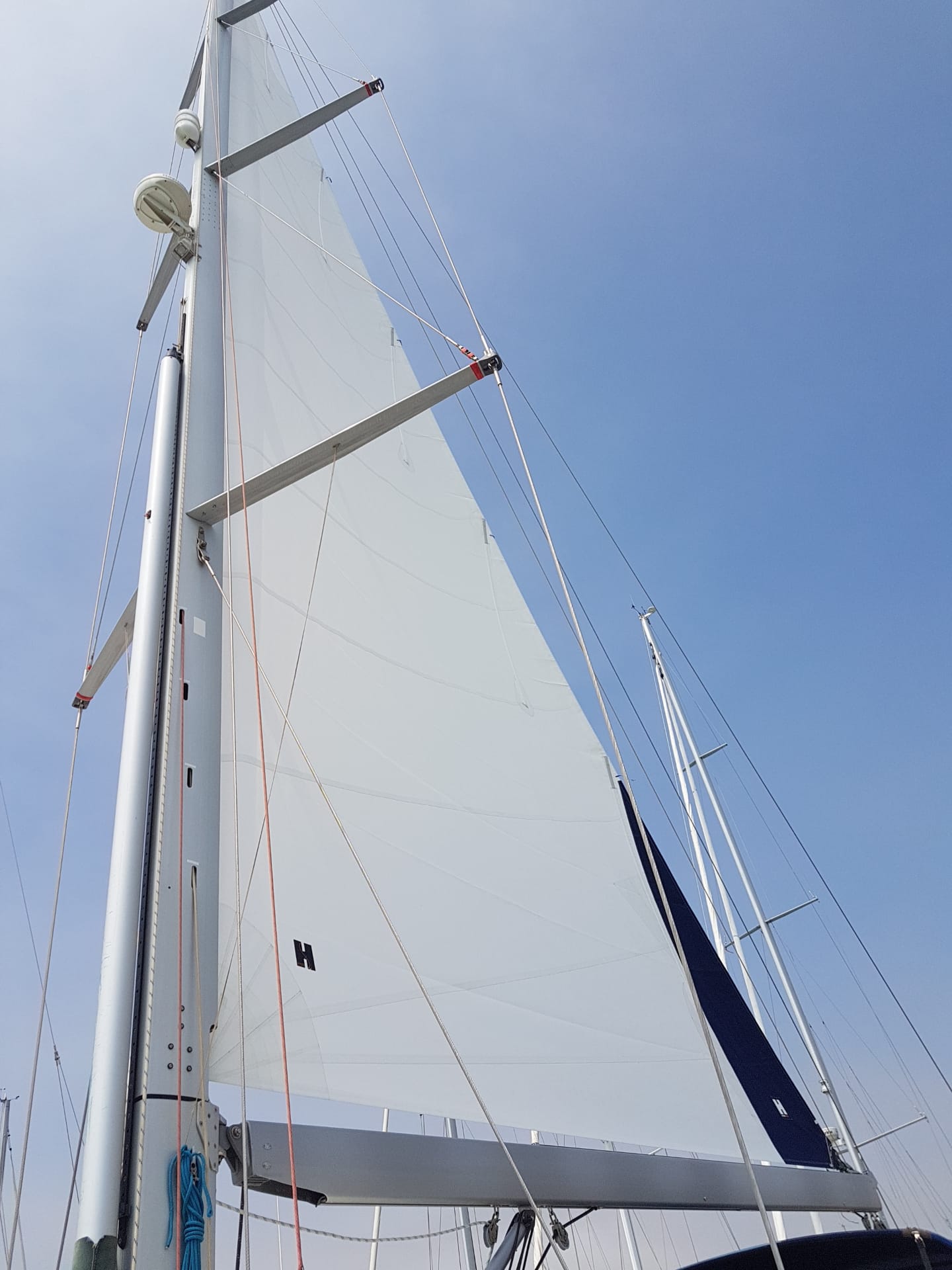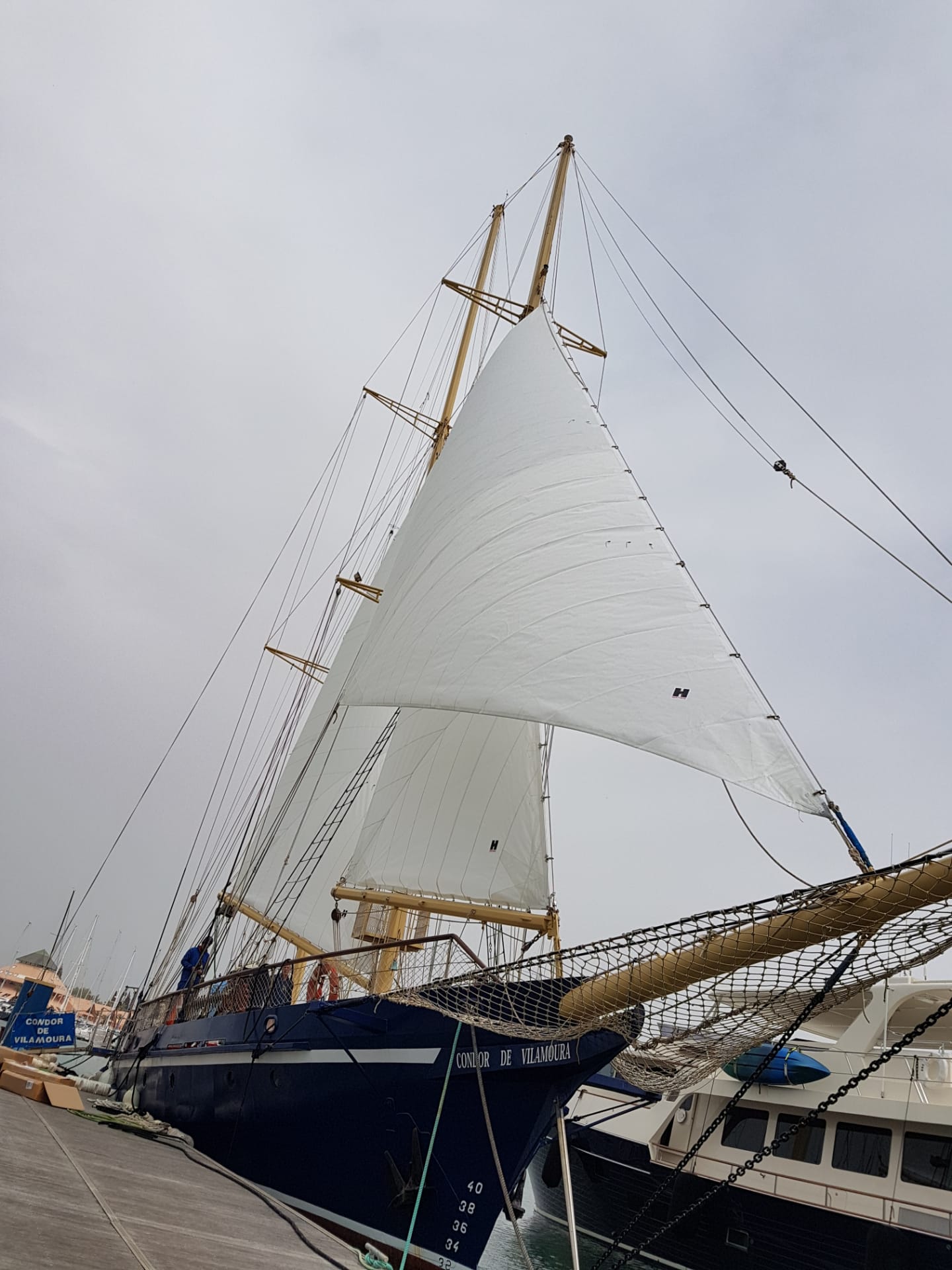New Sails
Request a quote that suits your vessel's sailing needs.
To define the perfect sail for your vessel, several factors must be analyzed, such as the cut, the type of sail, its purpose, the cost-benefit, among other factors to take into account.

The Dune Sailmakers team will be happy to present the best option for you.
Phone (+351) 289 321 155 | Mobile (+351) 965 505 962
For classic sails quotation, please, contact us:

Photo Gallery

Sail Cloth Material

Polyester - Dacron ® -Introduced in the 50s, it's the most used material in cruise sailing. It has good UV resistance, great abrasion resistance, good stretch resistance and cost-effective.
There are several manufacturers of different types of Dacron. The sails made with Dacron are easy to manoeuvre and, on cruising sailboats, can last a good few years. In sailing ships, they tend to lose their shape and performance quickly.

Nylon - Material used in Spinnaker sails, for being extremely light, strong, very flexible and with great abrasion resistance.
Kevlar ® -Material of the Aramid family, with low elasticity, used in bulletproof vests and armor. Quite common in sails of Regatta boats.
It is not suitable for cruise boats as it requires special care to increase their service life. Sails manufactured in Kevlar should not beat too much, should not be bent and have low UV resistance.

Twaron ® - It has distention properties similar to Kevlar, but higher tensile strength and better resistance to UV light. Like Kevlar, the fiber has a bright golden color. As demand for Kevlar has been decreasing its availability, more Sailmakers have been using Twaron.

Carbon Fiber - It has high resistance to UV light, being practically unaffected, but requires the same care as Kevlar sails. It is expensive, but it gives rise to high performance sails.

Vectran - Vectran is a high performance liquid crystal polymer produced essentially in polyester. TemIt has a module similar to Kevlar 29, however, suffers minimal strength loss. Which is beneficial in endurance applications and, for cruising sails where durability is key. The additional advantages of Vectran fiber include high chemical abrasion resistance and high tensile strength.

Ultra PE (UHMWPE) - At it's inception, it was presented as a rival to Kevlar. The brans Dyneema®, produced by the Netherlands company DSM, and Spectra®, from Honeywell, are familiar to many sailors.
These fibers offer great UV light resistance, low distension and very high tear resistance.
Both the Spectra and the Dyneema have been used primarily on larger cruise boats where reasonable weight, strength and durability are paramount.
Although the fiber is expensive, the sails' longevity makes them a great value for money.

Sail Types and Construction

Horizontal - It is the type of traditional construction in which the panels are placed horizontally, so that the first union seam is perpendicular to the Leech.
They are normally produced in Dacron®.

Tri Radial - It is the type of construction in which each section of the sail has triangular panels, placed so that the distribution of the fibers radiates the distribution of the force exerted by each one of the handles of the sail. For this reason, in these sails are used laminated materials.

Membranes - Latest launch in sail technology for competition and high performance cruising. The shape is determined by the mold, not the cuts and seams of the panels. Being able to be term molded or just glued, these sails only have seams in the reinforcements of the handles. They are of low weight, high resistance to deformation and low elasticity.
Other Materials - There are other materials such as Mylar, Spectra, Technora and all vary slightly in cost, quality and general characteristics, but do not escape the characteristics of a sail produced with Kevlar fabric.
Characteristics that need to be considered
UV Light Resistance - Exposure to ultraviolet radiation can result in the degradation of certain materials quickly.
Abrasion Resistance - During the maneuvers the sails scrape on the mast, the rail, etc., which ends up causing wear and tear.
Resistance to bending - Ability to withstand bends without vices or dents.





